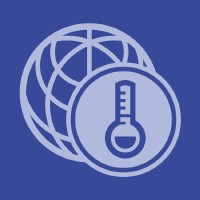Topic Editors


Climate Change and Human Impact on Freshwater Water Resources: Rivers and Lakes
Topic Information
Dear Colleagues,
The different patterns of phenomena observed in rivers (water stages, discharges, water temperature and chemistry, ice phenomena, etc.) in an average annual cycle, determined by climate and catchment properties, are relatively stable. Under the influence of changing climatic conditions and increasing human impact, a flow regime might destabilize and turn to another with sometimes quite different seasonal patterns, thus disturbing the established hydroecological conditions and availability of water resources. Depending on the sensitivity of a particular river regime model, its changes are temporarily and spatially diversified. In order to identify a change in any pattern (regardless of the reason), it is first necessary to adequately describe its initial state and the state after the transformation. There are diverse pattern-recognition methods, and both supervised and nonsupervised approaches can be applied to describe the flow regime patterns.
The hydrological regime of lakes can be analyzed in terms of their thermal conditions, formation of ice, and water levels. The quantitative, physical, and biological transformation of lake ecosystems may result from both natural (changes in precipitation, evaporation etc.) and human-induced (water intakes and discharges, hydraulic structures) processes. The regime of lakes in many regions of the world has been destabilized by intensive land use and regulation of water relations. Fluctuations in water levels, and thus changes in the lake area and the amount of stored water in the lake, are crucial in many physical–chemical (mixing, dissolution of substances, water transparency, etc.), biological (extent of ecotone zones, extent of photic zone, etc.) or economic (possibility of water withdrawals for industrial, domestic, agricultural purposes, etc.) processes.
The main aim of this Topic is to share the results of research on the impact of climate change and human activity on the characteristics of the flow regime of rivers in different regions of the world, mainly in terms of the transformation of the flow regime characteristics, their stability and predictability, and quantitative and qualitative assessments of water resources. Papers focusing on methods of detection changes and classifying the river regimes are particularly invited.
At the same time, this Topic addresses the impact of climate change and human activity on the lake regime characteristics in various regions of the world, mainly in terms of long-term changes in the amount of water resources, seasonal changes in water levels, and thermal and ice conditions.
Prof. Dr. Leszek Sobkowiak
Prof. Dr. Arthur Mynett
Dr. David Post
Topic Editors
Keywords
- flow regime
- flow seasonality
- thermal conditions
- water chemistry
- ice phenomena
- climate change
- human activity
- methods of detection changes and classifying river regimes
- regime of lake water levels
- thermal conditions
- thermal stratification
- ice phenomena
- lake ecosystems
- changes in lake water resources
- changes in lake area
Participating Journals
| Journal Name | Impact Factor | CiteScore | Launched Year | First Decision (median) | APC | |
|---|---|---|---|---|---|---|

Energies
|
3.2 | 5.5 | 2008 | 16.1 Days | CHF 2600 | Submit |

Hydrology
|
3.2 | 4.1 | 2014 | 17.8 Days | CHF 1800 | Submit |

Remote Sensing
|
5.0 | 7.9 | 2009 | 23 Days | CHF 2700 | Submit |

Water
|
3.4 | 5.5 | 2009 | 16.5 Days | CHF 2600 | Submit |

Climate
|
3.7 | 5.2 | 2013 | 19.7 Days | CHF 1800 | Submit |

MDPI Topics is cooperating with Preprints.org and has built a direct connection between MDPI journals and Preprints.org. Authors are encouraged to enjoy the benefits by posting a preprint at Preprints.org prior to publication:
- Immediately share your ideas ahead of publication and establish your research priority;
- Protect your idea from being stolen with this time-stamped preprint article;
- Enhance the exposure and impact of your research;
- Receive feedback from your peers in advance;
- Have it indexed in Web of Science (Preprint Citation Index), Google Scholar, Crossref, SHARE, PrePubMed, Scilit and Europe PMC.

